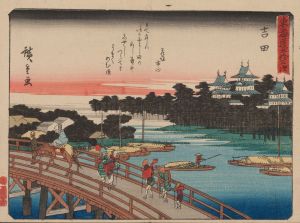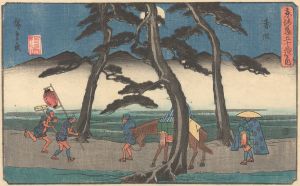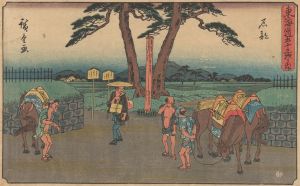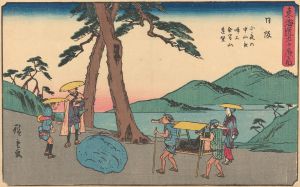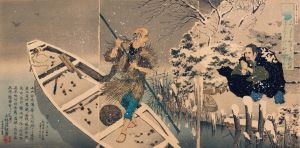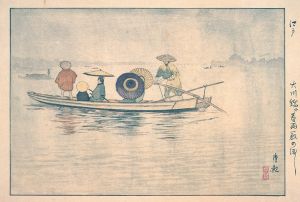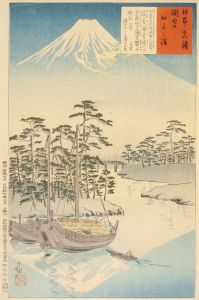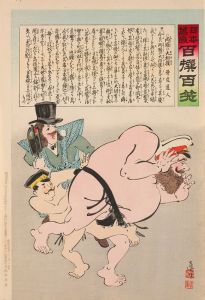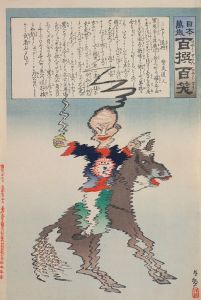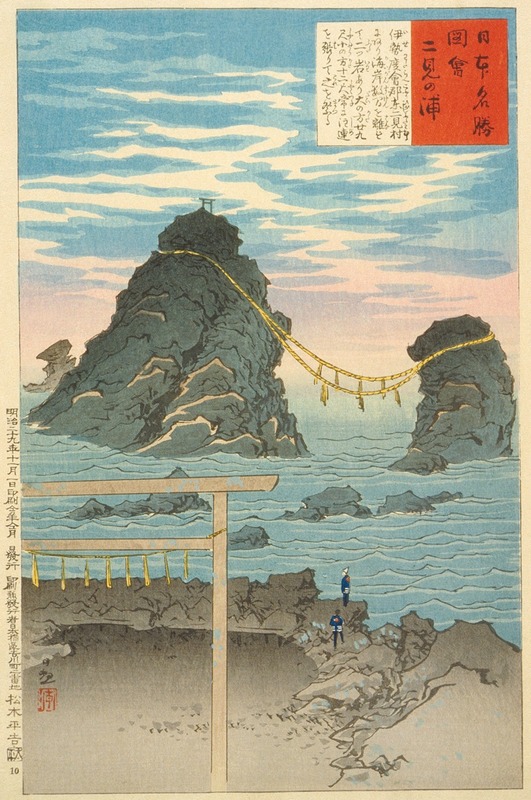
Futamigaura, the Wedded Rocks
A hand-painted replica of Kobayashi Kiyochika’s masterpiece Futamigaura, the Wedded Rocks, meticulously crafted by professional artists to capture the true essence of the original. Each piece is created with museum-quality canvas and rare mineral pigments, carefully painted by experienced artists with delicate brushstrokes and rich, layered colors to perfectly recreate the texture of the original artwork. Unlike machine-printed reproductions, this hand-painted version brings the painting to life, infused with the artist’s emotions and skill in every stroke. Whether for personal collection or home decoration, it instantly elevates the artistic atmosphere of any space.
Kobayashi Kiyochika (1847-1915) was a prominent Japanese artist known for his ukiyo-e woodblock prints and paintings. One of his notable works is "Futamigaura, the Wedded Rocks," which captures the iconic Meoto Iwa, or Wedded Rocks, located in Futami Bay, near Ise, Japan. This natural formation consists of two large rocks connected by a shimenawa, a sacred Shinto rope made of rice straw, symbolizing the union of the male and female deities, Izanagi and Izanami.
Kiyochika's depiction of the Wedded Rocks is part of his broader oeuvre that often blends traditional Japanese aesthetics with Western influences. His work is characterized by a keen interest in light and shadow, which he masterfully integrates into his compositions. This particular piece reflects his ability to capture the serene and spiritual atmosphere of the location, emphasizing the cultural and religious significance of the rocks.
The Wedded Rocks have been a subject of artistic representation for centuries, and Kiyochika's interpretation stands out for its unique approach. His use of color and light creates a dynamic interplay that highlights the natural beauty of the scene. The shimenawa rope, periodically replaced in Shinto rituals, is prominently featured, underscoring its importance in the spiritual symbolism of the rocks.
Kiyochika's work during the Meiji era (1868-1912) was marked by a transition from traditional ukiyo-e to a style that incorporated elements of Western art, reflecting the broader cultural shifts in Japan during this period. His prints often depicted scenes of modernization, such as railways and steamships, juxtaposed with traditional landscapes and cultural icons like the Wedded Rocks.
"Futamigaura, the Wedded Rocks" is an excellent example of Kiyochika's ability to blend these influences. The composition likely employs a perspective that draws the viewer's eye towards the horizon, where the rocks stand as a testament to enduring cultural traditions amidst a rapidly changing world. The tranquil waters and the distant horizon evoke a sense of timelessness, while the detailed rendering of the rocks and the rope convey a deep respect for the subject matter.
Kiyochika's legacy as an artist lies in his innovative approach to printmaking and his ability to capture the essence of Japan during a time of significant transformation. His works are celebrated for their technical skill and their ability to convey complex cultural narratives through visual art. "Futamigaura, the Wedded Rocks" remains a significant piece within his body of work, offering insight into both the natural beauty and the spiritual depth of one of Japan's most revered sites.
In summary, Kobayashi Kiyochika's "Futamigaura, the Wedded Rocks" is a masterful representation of the Meoto Iwa, blending traditional Japanese aesthetics with Western artistic influences. The piece highlights the cultural and spiritual significance of the Wedded Rocks, capturing the serene beauty and enduring symbolism of this iconic location.





